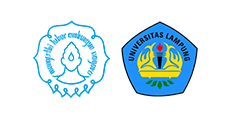The Analysis of Reward Systems Implementation in Basic Network Course: Case Study of a Vocational School in Solo, Central Java.
Abstract
The 2013 curriculum requires students to take an active and creative role in teaching and learning. Submission of materials in basic network learning process is still using a more dominant learning method that is owned by the teacher (teacher centered). It makes students in the learning process becomes more passive, so the students' activity in the learning process is still in the low category. One of the solutions to improve students 'learning activeness is by using tools or media that can attract students' attention. Learning tool or media is expected to help students to be interested and can play an active role in teaching and learning process. Learning tool or media used in this research is application of reward system. This study aims to (1) Know the difference between the use of reward system application in terms of activeness (2) to know the effectiveness of the use of reward system application in terms of student activeness. This research type is quantitative research with research design that is quasi experimental design with posttest only control design design. Techniques of collecting research data using questionnaires, interviews, and observation. Data analysis using t test and gain index analysis. The results of research are as follows: 1) there is difference of influence of using reward system application that is by t independent t test. Based on the analysis result obtained tcount of 3,790. ttable = 2.64208 at 5% error level with df = 76. So thitung> ttabel. 2) the reward system application is more effective with the experimental class result of -thount 3,703> -ttable 2,642 (76) while the Control class is -thount> -ttable (2,642,76) (1,016 <-2,642) and sig <0,05.
Keywords
Full Text:
PDFReferences
Arsyad, A. (2011) Media Pembelajaran . Jakarta : Rajawali Pers.
Departemen Pendidikan Nasional. (2005). Kamus Besar Bahasa Indonesia Pusat Bahasa. Jakarta : PT. Gramedia Pustaka Utama.
Dzamarah & Zain, (2006). Strategi Belajar Mengajar. Jakarta : Rineka Cipta
Hake, R.R. (1999). Analyzing Change/Gain Store. Diperoleh pada 21 Februari 2017 dari http://www.physics.indiana.edu/~sdi/AnalyzingChange-Gain.pdf.
Hamalik, O. (2001). Proses Belajar Mengajar. Jakarta: PT. Bumi Aksara
Kholik, M. (2011).Metode Pembelajaran Konvensional. Diakses melalui alamat web http://muhammadkholik.wordpress.com Pada tanggal 25 Desember 2015
Muhlishin. (2013). Pengertian umum Pembelajaran Konvensional. Diakses melaluihalaman web http://www.referensimakalah.com/2013/05/pengertian-umum-pembelajaran.html. pada tanggal 25 Desember 2016
Purwanto.(2009). Evaluasi Hasil Belajar.Yogyakarta : Pustaka Pelajar
Sanjaya, W. (2006). Strategi Pembelajaran : Berorientasi Standar Proses Pendidikan. Jakarta : Kencana Prenada Media Group
Sanjaya, W.(2006). Strategi Pembelajaran : Berorientasi Standar Proses Pendidikan. Jakarta : Kencana Penada Media Group
Sudjana, N. (2014). Penilaian Hasil Proses Belajar Mengajar. Bandung : PT Remaja Rosdakarya
Sugiyono, (2013). Metode Penelitian Pendidikan. Bandung: Alfabeta.
Undang-Undang RI No. 20 Tahun 2003, tentang Sistem Pendidikan Nasional.
Yudhi, M. (2008). Media Pembelajaran (Sebuah Pendekatan Baru). Jakarta: Gaung Persada Press.













